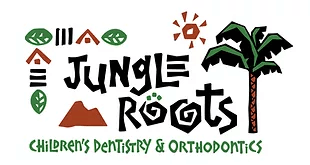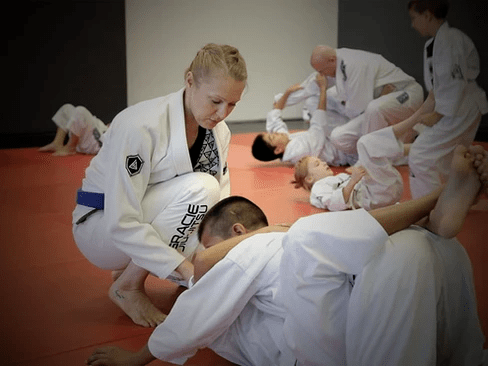What if My Child has Missing Teeth?
For a lot of parents, it is pretty normal whenever their kid loses a baby tooth because they’re anticipating a permanent tooth to grow in its place soon. But what if your child lost a tooth from injury or a baby tooth or adult tooth did not appear in a reasonable amount of time? This is a totally different situation and can be worrying for both parents and children.

Fortunately, just like any other dental issue (e.g crossbite, extra teeth), missing teeth problems can be solved through effective oral interventions and treatments which are carefully designed to suit your child’s dental needs. Many solutions are available to help bring a healthier, more confident smile to your child’s face.
A Brief Overview of Missing Teeth
There are a few reasons that we see missing teeth. Some are preventable while others are not. An obvious cause is trauma (such as from falling, a sports injury, or a car accident) that results in a tooth being knocked out.
Tooth agenesis is the term used to describe when teeth simply never grow in, a common human craniofacial anomaly that is characterized by having one or more missing teeth. There are at least three classifications of this dental condition:
- Anodontia - all permanent teeth are absent
- Oligondontia - six or more adult teeth are missing
- Hypodontia - between one to five permanent teeth are missing

Hypodontia, also referred to as congenitally missing teeth (CMT), is the most prevalent cause of tooth agenesis. A normal adult mouth holds a total of 32 teeth: 8 incisors, 4 canines, 8 premolars, and 12 molars (4 of the molars are wisdom teeth). Except for the wisdom teeth (which usually erupt at around age 18), the rest of these permanent teeth should have emerged by around age 13. If this hasn’t been the case for your child, then most probably, he or she may have hypodontia. There are a number of factors that trigger this, and they are as follows.
Trauma
Trauma can result in a tooth being knocked out, but it can also have other consequences. When there is trauma to a developing tooth, it may (rarely) contribute to the development of hypodontia or damage to the permanent tooth.
Genetics
Congenitally missing teeth (CMT) is strongly linked to heredity. If a parent has hypodontia, the probability of his or her child inheriting such dental abnormality is relatively high.
Syndromes
Various genetic syndromes are linked to forms of tooth agenesis such as hypodontia, which is considered a phenotypic feature of certain conditions such as ectodermal dysplasia, Down syndrome, and Van der Woude syndrome. Cleft Lip and Palate often occur in combination with other congenital anomalies such as hypodontia. The maxillary lateral incisor is often the most affected tooth in the cleft area, hence preventing the growth of one or more of these permanent teeth.
When to Seek Treatment
All primary or baby teeth are expected to come in by the age of 3. The chart below shows when each of the baby teeth and permanent teeth usually arrive. However, remember that every child is unique, and some children will have teeth come in much earlier or later than this.

If your child is missing one or more teeth much past the age it should have erupted, it is a good idea to have your child’s mouth evaluated. If you bring your child in for regular dental check-ups, we will discover if your child does have a missing tooth and will consistently monitor the progress through dental x-rays and other examinations. Ideally, your child’s first panoramic x-ray should be taken around the age of 6. At this point, we should be able to determine if your child has a missing permanent adult tooth. This along with regular checkups, allows us to outline future growth and development of your child’s teeth and mouth and know what to expect and plan for.
If early orthodontic screening is recommended it will us to create a preliminary plan to guide growth and development. A plan helps us to foster an environment that will allow for both healthy function of the teeth and jaws and aesthetics for a beautiful smile. If your child needs orthodontic treatment, it is best to work with a dental and orthodontic provider that will coordinate their care for a like-minded goal for the future.
If your child has not had regular dental checkups and their permanent teeth have not arrived on schedule, it is a good idea to bring them in for an evaluation, to decide what treatment suits your child’s oral needs best. Failing to treat a child’s missing teeth could result in complications such as misalignment of the other teeth, improper chewing of food, unhealthy jaw support, instability of the remaining teeth, difficulty pronouncing certain words, and low self-esteem.
Treatment Options and Recommendation
It is important to seek orthodontic treatment from an Orthodontist that has received specialized training in the art and science of moving teeth and aligning the bite and jaws. Simply closing the space is not enough. There are many other important factors to consider in creating the optimal solution and prevent lifelong complications.
It is also important that children with missing teeth be evaluated and treated by an Orthodontist as early as possible, to receive the most appropriate treatment. If too much time is allowed to pass, the teeth adjacent to and above the missing tooth/teeth will shift, slide, and tip into the area over time, disrupting normal function.
We will watch and monitor the growth of your child’s teeth on a regular basis to determine the proper timing for orthodontic intervention. Depending on the tooth/teeth missing, we can take the following early intervention measures:
- Guide the growth of the permanent teeth to accommodate for the loss of the missing teeth/tooth. We can use space maintainers and holding arches to prevent spaces from closing or shifts of the midline. This is ideal so that when a patient is ready for orthodontic intervention, the best foundation is present to achieve optimal function and health of the teeth and jaws.
- When a patient is ready for orthodontic intervention, plans can include retaining existing primary teeth for as long as possible. This does require a commitment to receiving regular dental and orthodontic check-ups. Regular checkups are vital because you should only retain primary teeth for as long as they are NOT causing damage to the surrounding teeth and supporting gums and bone.
- Sometimes, it is recommended to remove existing primary teeth and either preserve the space for a future implant or close the spaces using orthodontics.
Once your child is old enough, there are permanent dental options that your child can avail of. We can also treat missing teeth in adults, whether or not you have previously sought treatment. When necessary, we can coordinate care with other dental specialists to provide the best possible results.
Orthodontics
There are a couple of ways by which orthodontics can treat hypodontia. One great example would be creating a space in the region where a tooth should have emerged but failed to, and another tooth happened to fill, or partially fill that gap. In this scenario, once a space is created, an implant can be considered. Another option would be closing a gap left by a lost tooth by moving other teeth into position to close that space.
Implants
Because of its strength, longevity, and aesthetic appeal, an implant is an excellent solution for lost teeth. Implants, however, are only viable when your child has completed the adolescent growth phase, since adolescents that are still growing are not candidates for implants. Usually, females can get implants in their very late teens/early twenties and males in their early twenties. Since every child is unique, the exact age may vary. We will keep an eye on your child’s development to determine the optimal time.
Removable Bridge
A removable bridge is another remedy for missing teeth. This is basically a combination of a denture and a bridge. It is removable and it bridges the gap between any number of lost teeth. Just like removable retainers which are commonly used after braces treatment, these may not be comfortable for children to wear at first, but they can get used to it easily.
Traditional Bridge
A traditional bridge does the same job as a removable bridge. However, it is fixed and permanent. This is stuck directly to the surface of existing teeth. Traditional bridges may be a bit more difficult to clean than removable bridges and may necessitate reducing certain healthy portions of the adjoining teeth.
Composite Bridgework
A composite bridge is a combination of a fixed bridge and a partial one. We shape a “replacement” tooth with an adhesive, and then bond it to the surfaces of the nearby teeth without needing to remove any of the healthy tooth material from them. Should an implant or other solution be declared necessary at a later date, this bridge can easily be detached. It has mostly the same cleaning challenges as a fixed bridge, so a proper and consistent dental care routine is vitally important to keep it functioning as it should.
Whether your child lost a tooth or teeth through accident or injury, or they simply never grew in, we are here to help. Please don’t hesitate to consult us if anyone in your family is missing teeth. We offer outstanding treatments that provide ideal solutions for missing teeth, and we are privileged to continually guide families in achieving optimal oral health. We would love for everyone to have the smile and confidence they truly deserve!

At Jungle Roots Children’s Dentistry & Orthodontics, we strive to provide the highest comprehensive pediatric and orthodontic dental care in a unique, fun-filled environment staffed by a team of caring, energetic professionals. We believe the establishment of a “dental home” at an early age is the key to a lifetime of positive visits to the dentist.


















